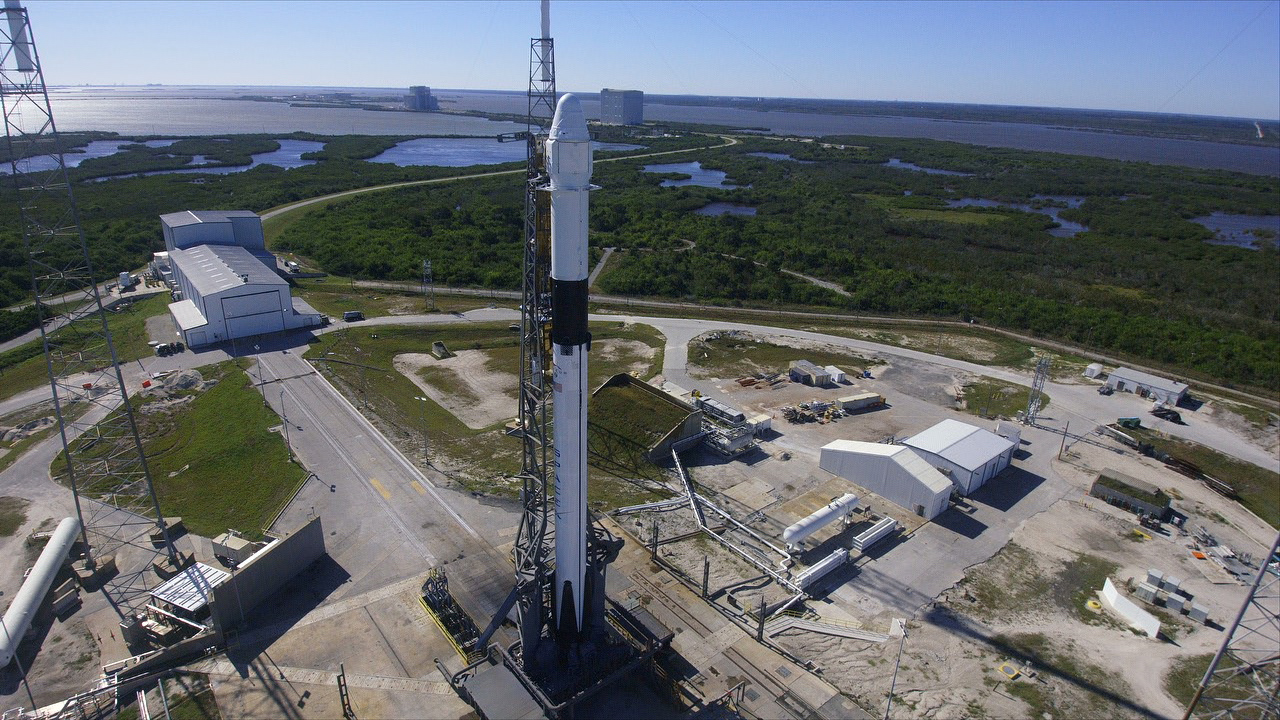Update: The CRS-17 launch has slipped to Friday, May 3rd, to give NASA time to evaluate electrical issues aboard the International Space Station. Follow us (@Astroguyz) on Twitter for further updates on the visibility prospects of the mission leading up to launch.
Ever seen a rocket launch before? Catching one is easier than you might think. You just need to be looking in the right direction at the right time, and have clear skies. If you happen to be watching from the U.S./Canada eastern seaboard before dawn this Friday (May 3rd), you just might catch the spectacular dawn launch of a SpaceX Falcon-9 rocket with Dragon on the CRS-17 (also known as SpX-17) mission headed to the International Space Station.
The mission: CRS-17 (Commercial Resupply Services) is now slated to liftoff from launch pad SLC-40 at Cape Canaveral Air Force Station on the Florida Space Coast on May 3rd at 3:11 AM Eastern Time (EDT)/7:11 Universal Time (UT). The mission will carry 5,500 pounds of supplies and research equipment to the International Space Station. This past weekend’s successful static fire of the rocket on the pad was one of the last checkouts leading up to launch. There’s also a NASA Social currently underway, allowing social media users to view the launch up close.
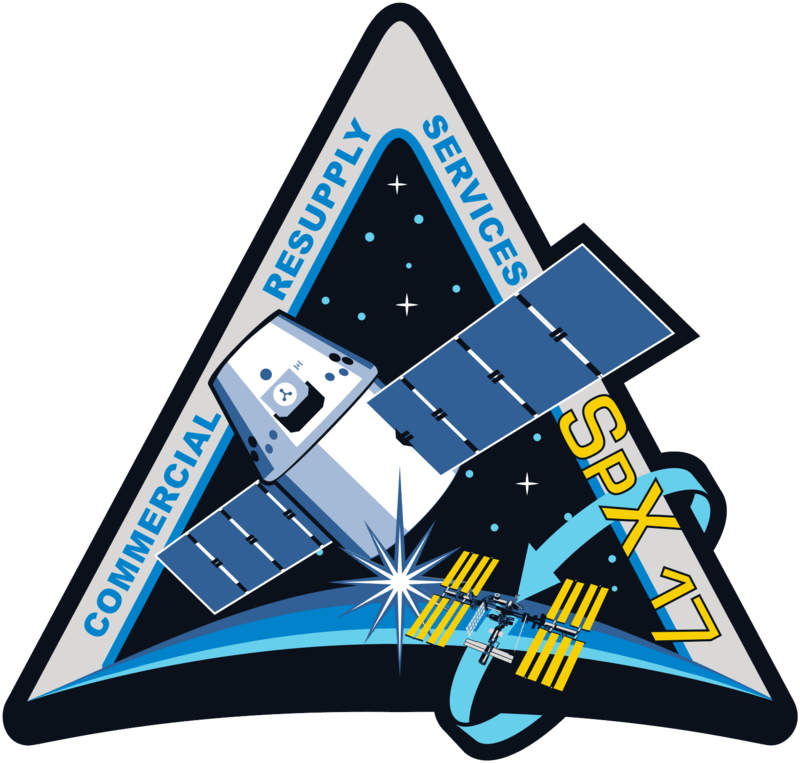
Not all rocket launches are created the same. It’s the viewing geometry for the Friday CRS-17 launch that makes it so interesting. While night launches from the Cape and the Kennedy Space Center are typically visible across the Florida peninsula, CRS-17 will also track northeast along the U.S. east coast as it chases after the International Space Station. The station has an orbit inclined 51.6 degrees relative to the Earth’s equator, and Dragon must match orbits with the station for grapple and berthing on May 6th.
Dawn launches from Florida are the best, as the blossoming plume of the rocket rises and hits sunlight streaming over the curve of the Earth. Friday’s instantaneous launch window occurs at 3 hours and 33 minutes before local sunrise over the Cape. Launch also occurs about 15 minutes behind of the International Space Station in its orbit. As the Falcon-9 rocket climbs to the northeast, it will then jettison its stage 1 booster around 2 minutes and 20 seconds after launch, for return and landing six minutes later on the “Of Course I Still Love You” (OSCISLY) barge out at sea. The booster landing was originally set to return back to the Cape on dry land, but was moved back out to sea after the April 20th testing anomaly on Crew Dragon. The move was necessary to preserve the integrity of the site, during the ongoing investigation.
The rocket should then hit sunlight at about 8-10 minutes after launch as it crosses latitude 42 degrees north, about 100 miles off of the southern coast of Nova Scotia. The Falcon upper stage and Dragon will then continue to skim the Canadian coast before crossing the night/day terminator east of the Canadian Maritimes and Newfoundland about 12 minutes after liftoff. Stage 2 separation will occur at 10 minutes after liftoff.
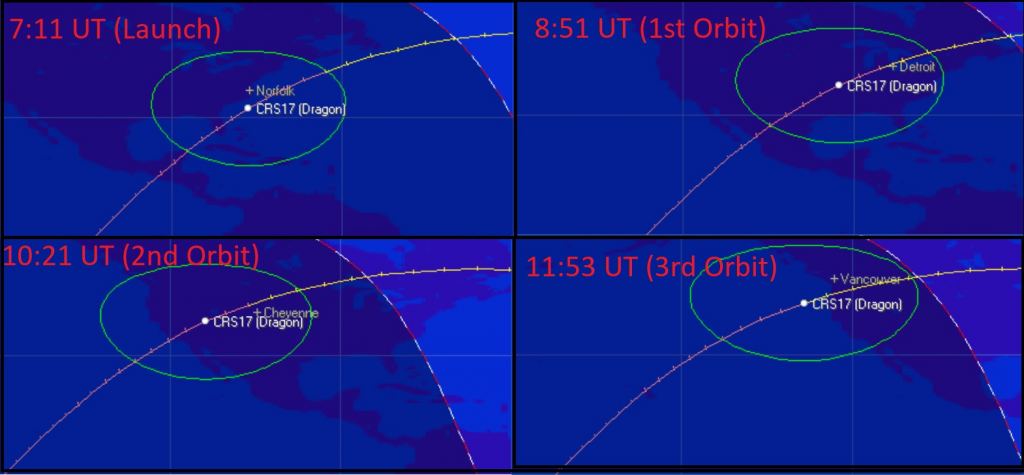
SpX-17/CRS-17: A study of the first three orbits, from shortly after launch Friday May 3rd (upper left), to the end of the third orbit (lower right) the green circle represents the visibility footprint, and the striped red-white line is the day/night terminator. Created by the author using Orbitron, thanks to Dr. Marco Langbroek for the Dragon pre-launch TLE estimates.
Unfortunately, slipping the launch from May 1st to May 3rd moved it to an even earlier window, meaning it may slide just inside the Earth’s shadow for the central U.S. eastern seaboard. Still, it’s always worth watching out for, if skies are clear.
If the launch slips further, it will move up 24 hours later into an even earlier red-eye slot for eastern observers. As of writing this, cloud cover prospects look to favor the southeastern U.S. for clear skies, and get somewhat dicier the farther you go to the northeast.
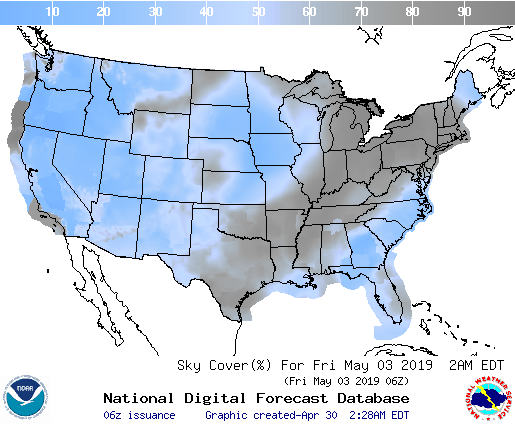
Cloud cover prospects over the contiguous United States an hour before launch time Friday morning. Credit: NOAA.
Follow that spacecraft, as the launch slipping to May 3rd means that folks across the U.S. and Canada could be in for a show as well on the first few orbits. A Dragon launch typically generates four objects in orbit: the Falcon stage 2 booster, the Dragon capsule and the two jettisoned solar panel covers. We saw these pass over northern Maine on the frosty clear morning of January 10th, 2015 as two bright “stars” (the Falcon S2 and Dragon) piercing the dawn, flanked by two fainter flashing stars (the solar panel covers). Folks in the contiguous U.S. and southern Canada may see a similar sight on the first, second and third orbits before sunrise on May 3rd, about 90, 180 and 270 minutes after launch.
ISS viewing circumstances this week currently favor latitudes 40-50 degrees south at dusk, and 40-50 degrees north at dawn. Assuming the launch goes off on time on Friday, grapple of Dragon with the Canadarm 2 is set to occur on Monday, May 6th for berthing on the Harmony module. NASA TV will carry the event live, (time to be announced).
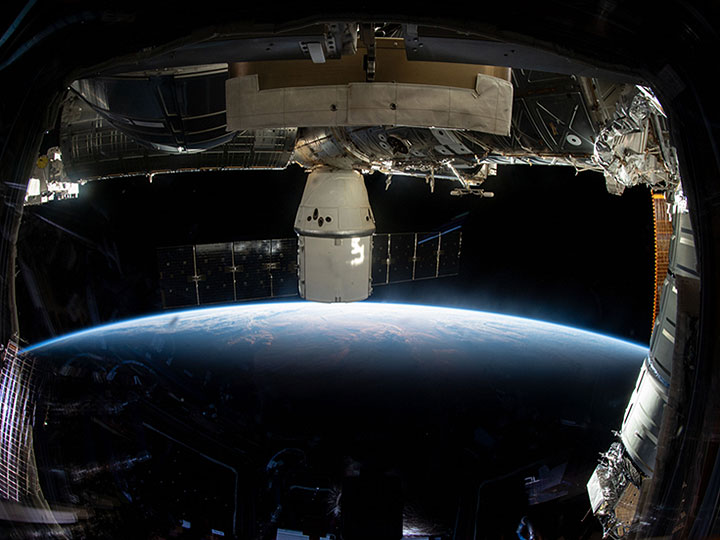
Thinking of viewing and/or imaging CRS-17 as it races up the U.S. Eastern Seaboard? Though the launch will be visible across the Florida peninsula and along the coast, be patient and allow for 30 seconds to several minutes (depending on your location) for CRS-17 to clear the curve of the planet and the local horizon. Keep a good pair of binoculars handy, and our strategy is to run two rigs: one with video, and another DSLR camera with a wide-field of view mounted on a tripod for still shots. Make sure you take several shots beforehand, to get the sky exposure settings correct before the action starts.
Also, keep an eye out for lingering neon blue noctilucent clouds related to the launch. These can persist right up until dawn.
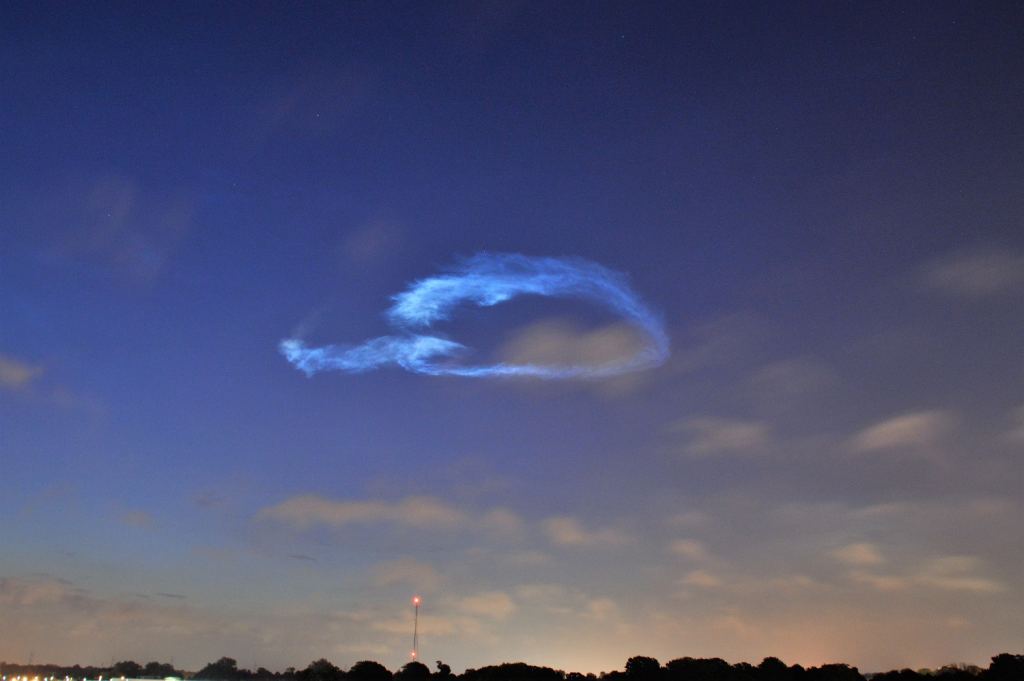
One of the best launches we saw during the shuttle era had a similar dawn launch geometry, when space shuttle Discovery lit up the Florida skies on the morning of April 5th, 2010 on STS-131:
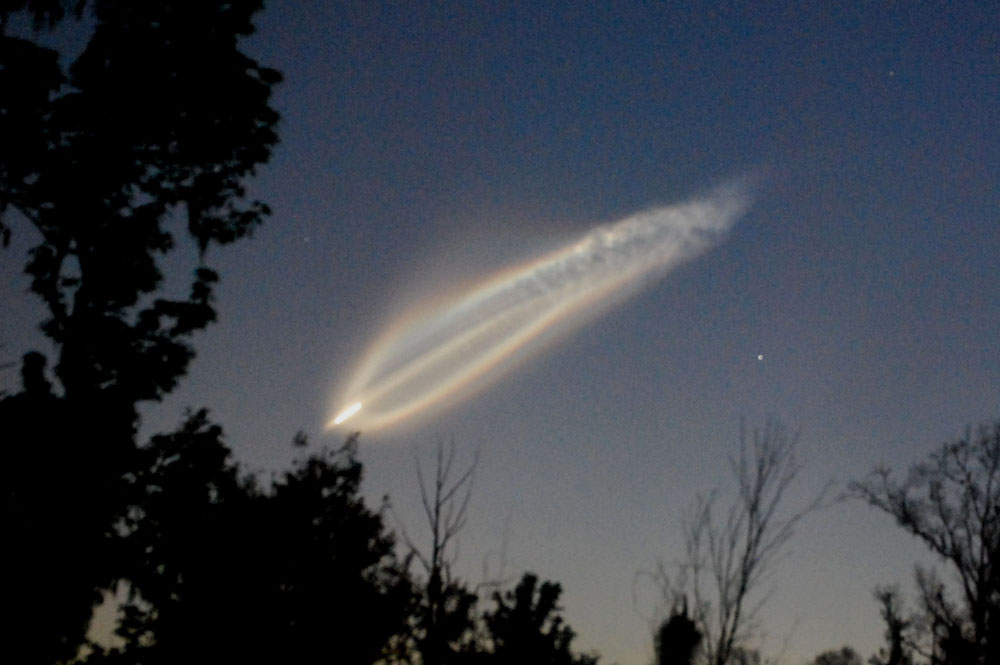
Another memorable launch was MUOS-4 from the Cape on the morning of September 2nd, 2015:
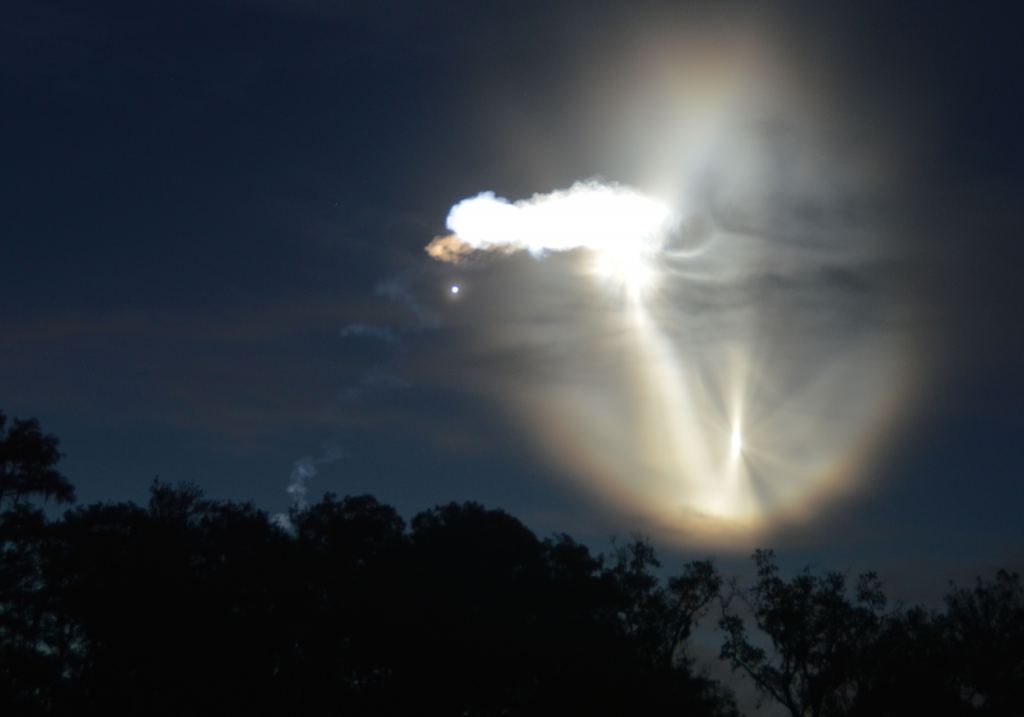
Note that on the U.S. West Coast the reverse is true, as launches from Vandenberg Air Force Base head out to sea westward, lighting up southern California at dusk:
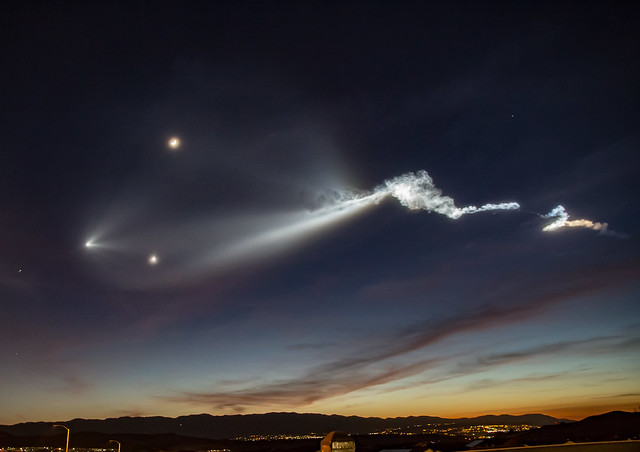
We’ll be watching from the top of our apartment’s parking garage in downtown Norfolk, Virginia on Friday morning, clear skies willing… and we fully expect lots of “what was that strange light in the sky?” queries from surprised early commuters along the U.S. East Coast early Friday morning.

